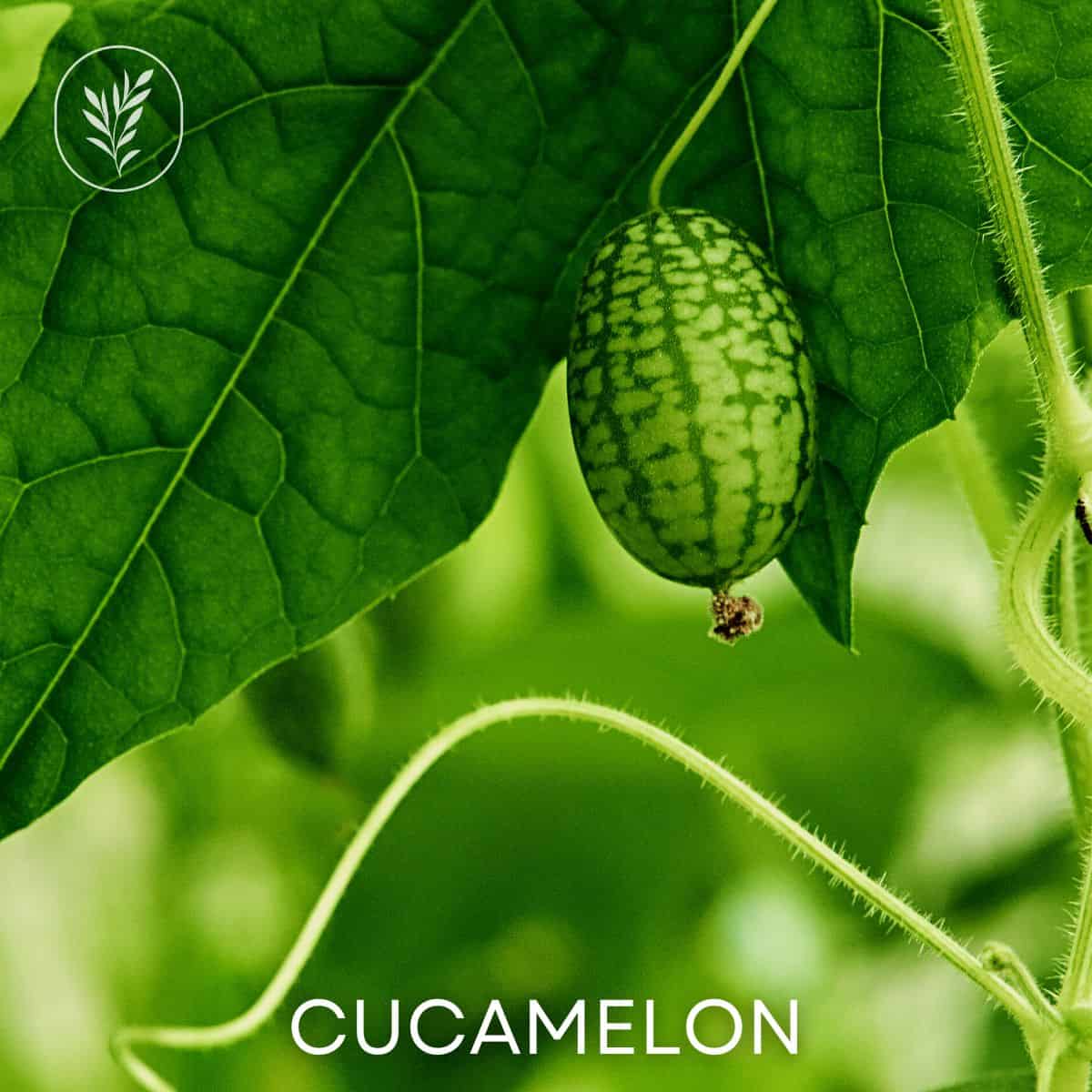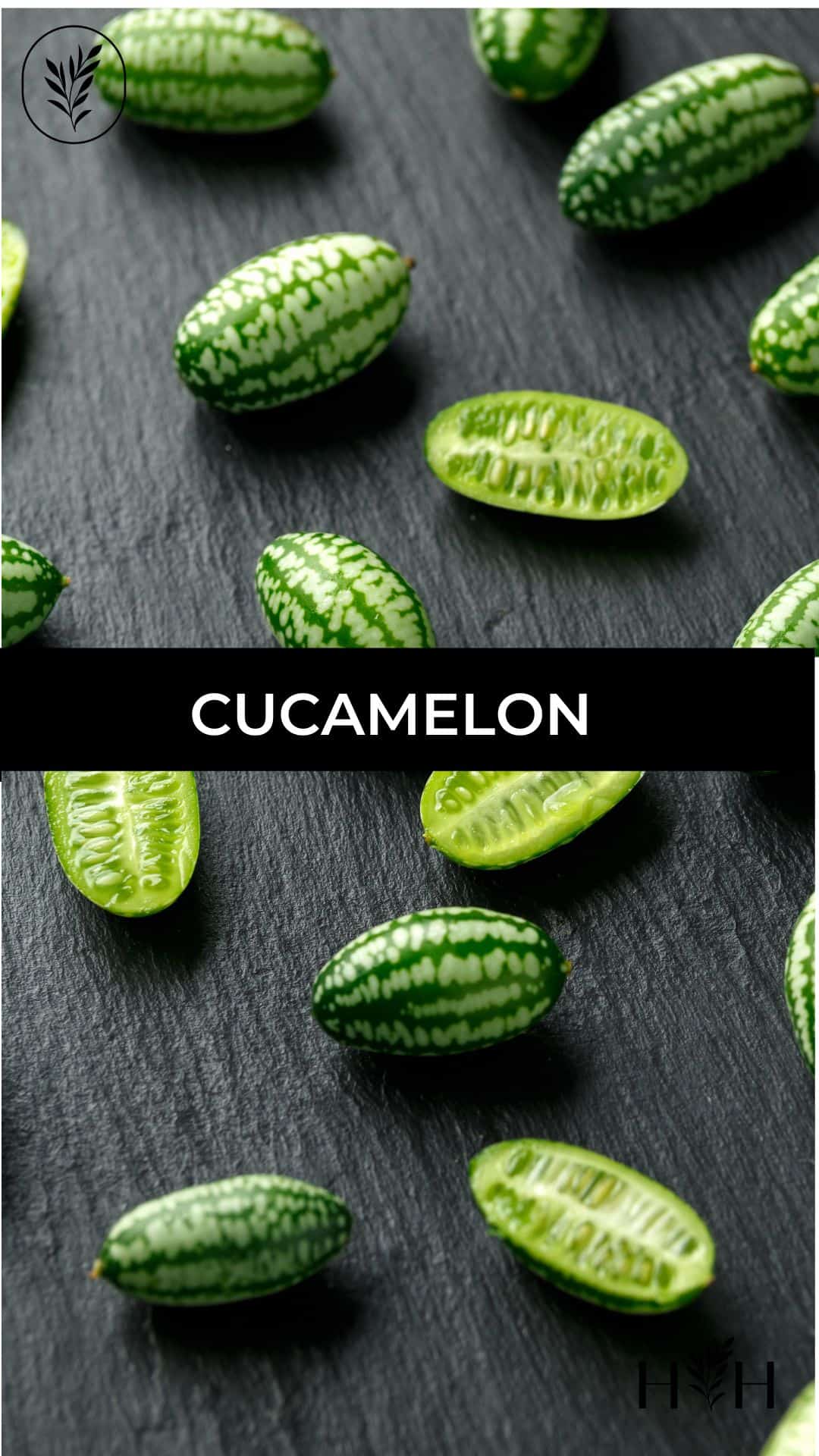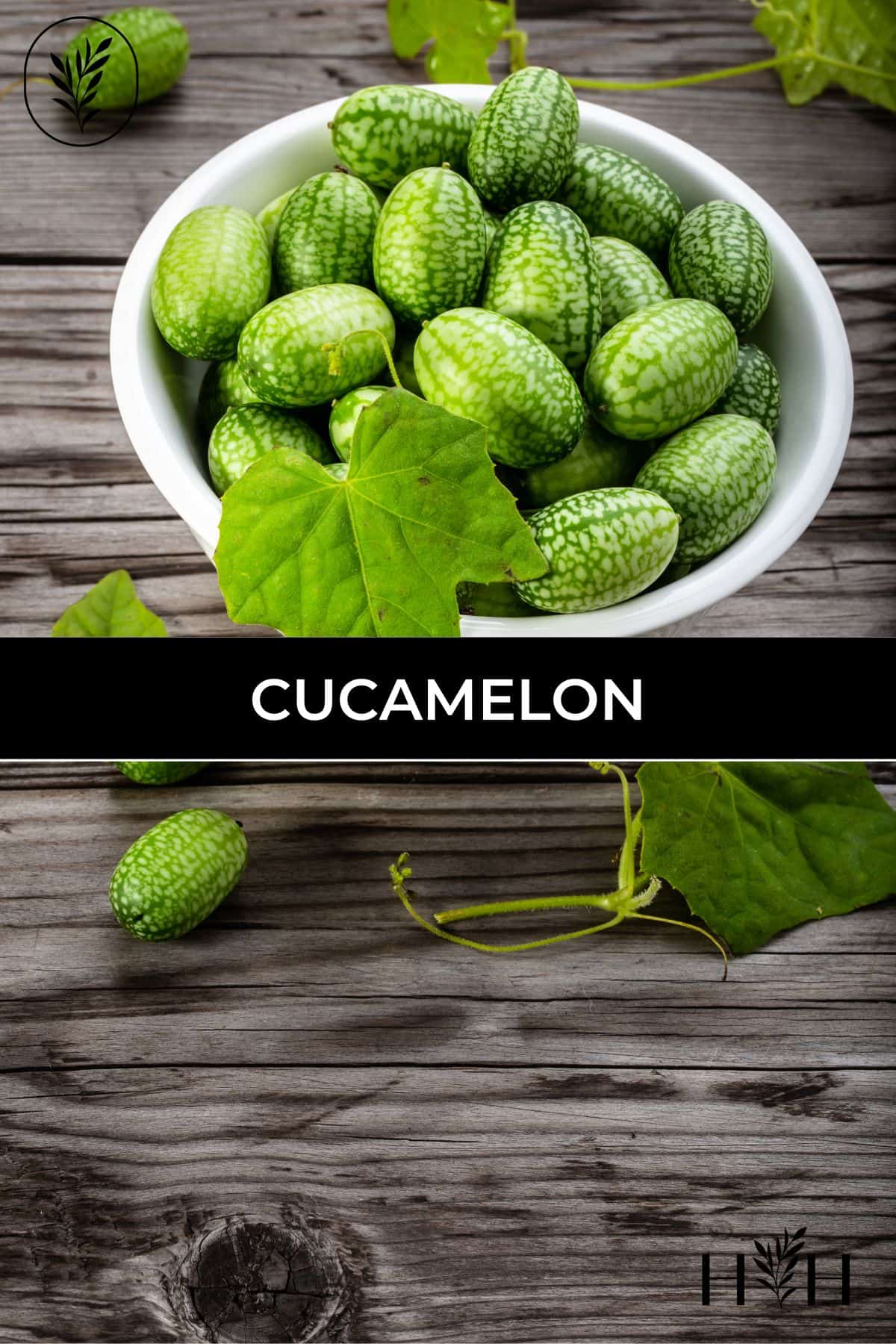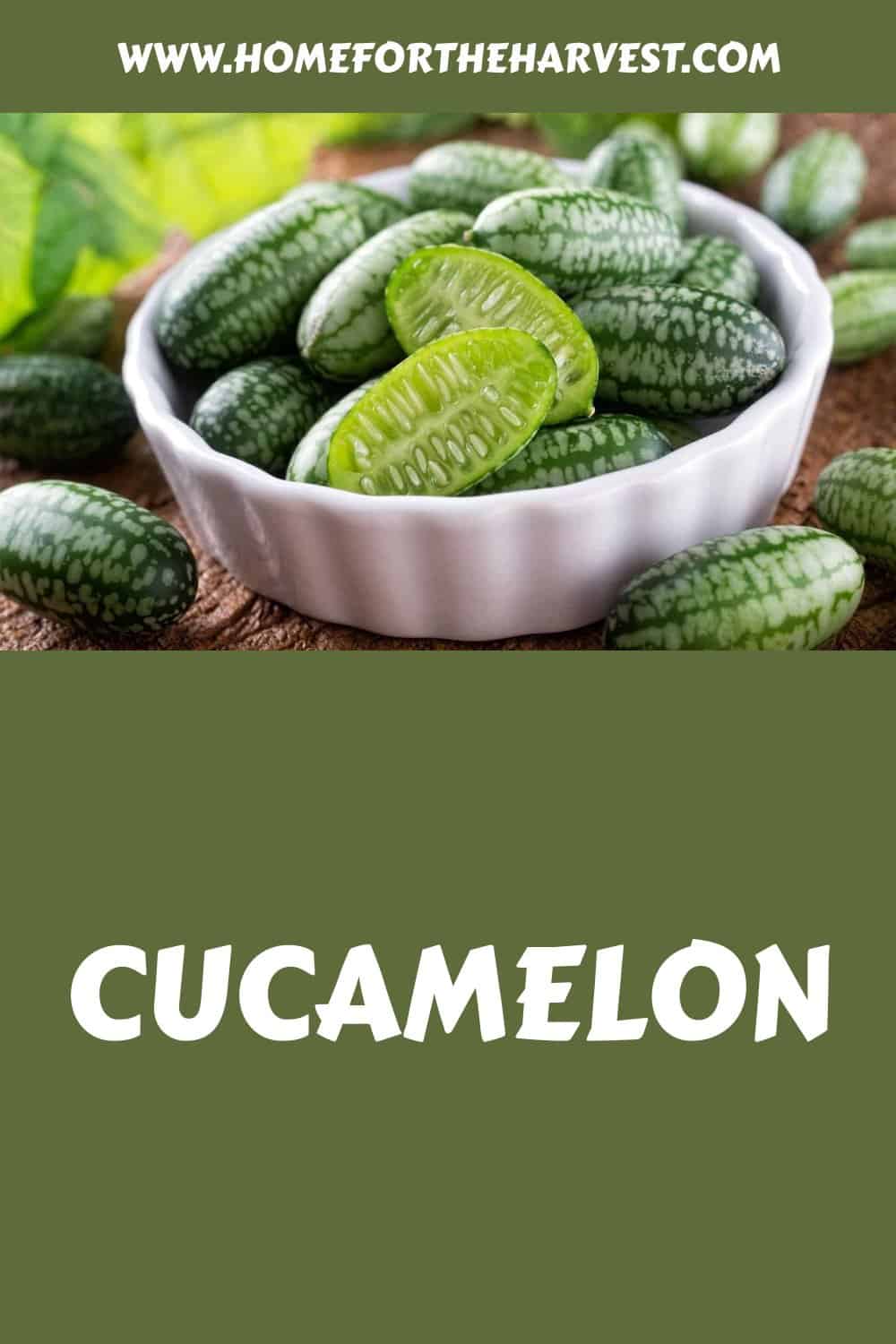If you are a fruit lover, you may be familiar with many different kinds of fruit, but have you ever heard of a cucamelon? Cucamelons are popular fruits with home gardeners, but what are they?
Cucamelons are small fruits that taste similar to cucumbers but are slightly sour when eaten. Cucamelons, part of the cucurbit plant family (like watermelon and cucumber), look like miniature watermelons but are green inside. Cucamelon plants are vigorous and can grow to be over 10 feet tall if trellised.
Now that you know what a cucamelon is, you may be wondering how to grow them and what the other names for the fruit are. This article will dive into all you could ever want to know about this unique fruit.
What is a cucamelon?
A cucamelon is a small fruit that looks like a small watermelon on the outside and is completely green on the inside. They have a texture very similar to grapes, but the outside is slightly hard. The outside of the cucamelon gives it a nice crunch when you bite into it.
Cucamelons taste like a cucumber with a slight lime taste, so they have a slightly sour flavor. The sour flavor increases the longer they grow, so pick them off the vine early if you don’t like sour things. Cucamelons rarely grow to be more than 1 inch in length.
The cucamelon has many different names. Its scientific name is Melothria scabra, but it is also commonly called the Mexican miniature watermelon, Mexican sour cucumber, Mexican sour gherkin, or the Mouse Melon.
The cucamelon is native to Mexico and Venezuela, so it enjoys growing in warm temperatures. Because these plants enjoy growing in warm temperatures, they are not frost resistant and will not grow in temperatures below 60˚F. However, if the roots have not been damaged by cold temperatures, cucamelons grow annually, so if you want to plant them, you do not have to purchase seeds every year.
The cucamelon grows on vines, and the flowers that precede the fruit are bright yellow in color. The female flowers bloom before the male flowers, which is unusual for the type of flower that grows. Although the flowers can pollinate themselves, they mainly rely on bees and butterflies for pollination.
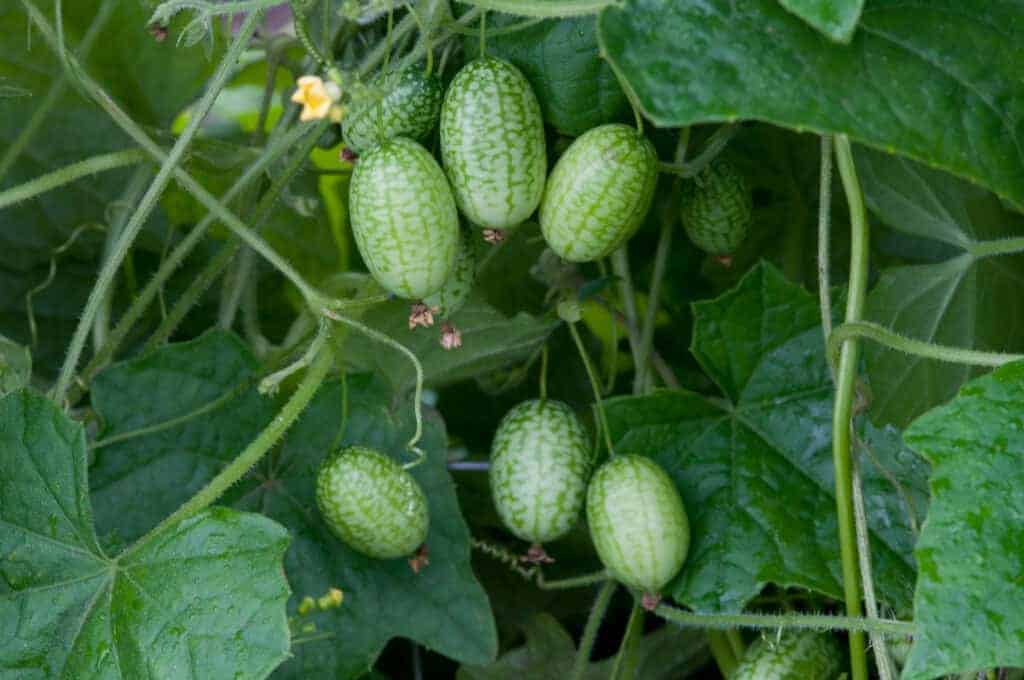
How to grow cucamelons
Cucamelons are relatively easy to grow in the right conditions. They like warm weather, sunlight, and ample water.
Soil
Plant the seeds or seedling plants in nutrient-rich soil. The seeds can be planted in a pot or an outdoor garden. When you plant the seeds, place them about 1/2 inch underneath the soil and cover them. It will take about 6-10 days for the plants to germinate. After the leaves have appeared, sprinkle some fertilizer into the soil.
When you grow cucamelons, place a trellis or tomato basket nearby or over them. Cucamelons grow on vines, and they will need support from the trellis or tomato basket to grow strong and tall. Cucamelons can grow to be more than 10 feet tall if they are in the right conditions.
Water
Cucamelons do not need a lot of water to grow. As long as the soil is kept damp, the cucamelons will grow. Cucamelons are used to growing in warm temperatures and are drought resistant. We recommend watering them once a week until the soil is thoroughly damp, but not soaking wet. If you live in a warm climate where the temperatures are frequently above 100˚F, water them more often, but check the amount of moisture in the soil before doing so.
Light
Cucamelons need plenty of sunlight to grow. Plant the seeds in an area that receives a lot of direct sunlight. The leaves will not burn like many other plant leaves do if they are in direct sunlight for too long. In fact, direct sunlight will help prevent many diseases from infecting the leaves because excess moisture won’t linger on the leaves.
Cucamelons are quite a bit more resilient than cucumbers. Beyond being able to withstand cooler temperatures than cucumber plants, cucamelon plants are also inherently drought resistant.
You will know your cucamelons are ripe and ready to be picked when the fruits have grown to be at least an inch long.
Temperature
Cucamelons thrive in warm temperatures. Although they will grow during cool spring days, they will not grow in temperatures that are under 60˚F. They grow best when the average temperature is around 70˚F but will grow in higher temperatures if they are given enough water.
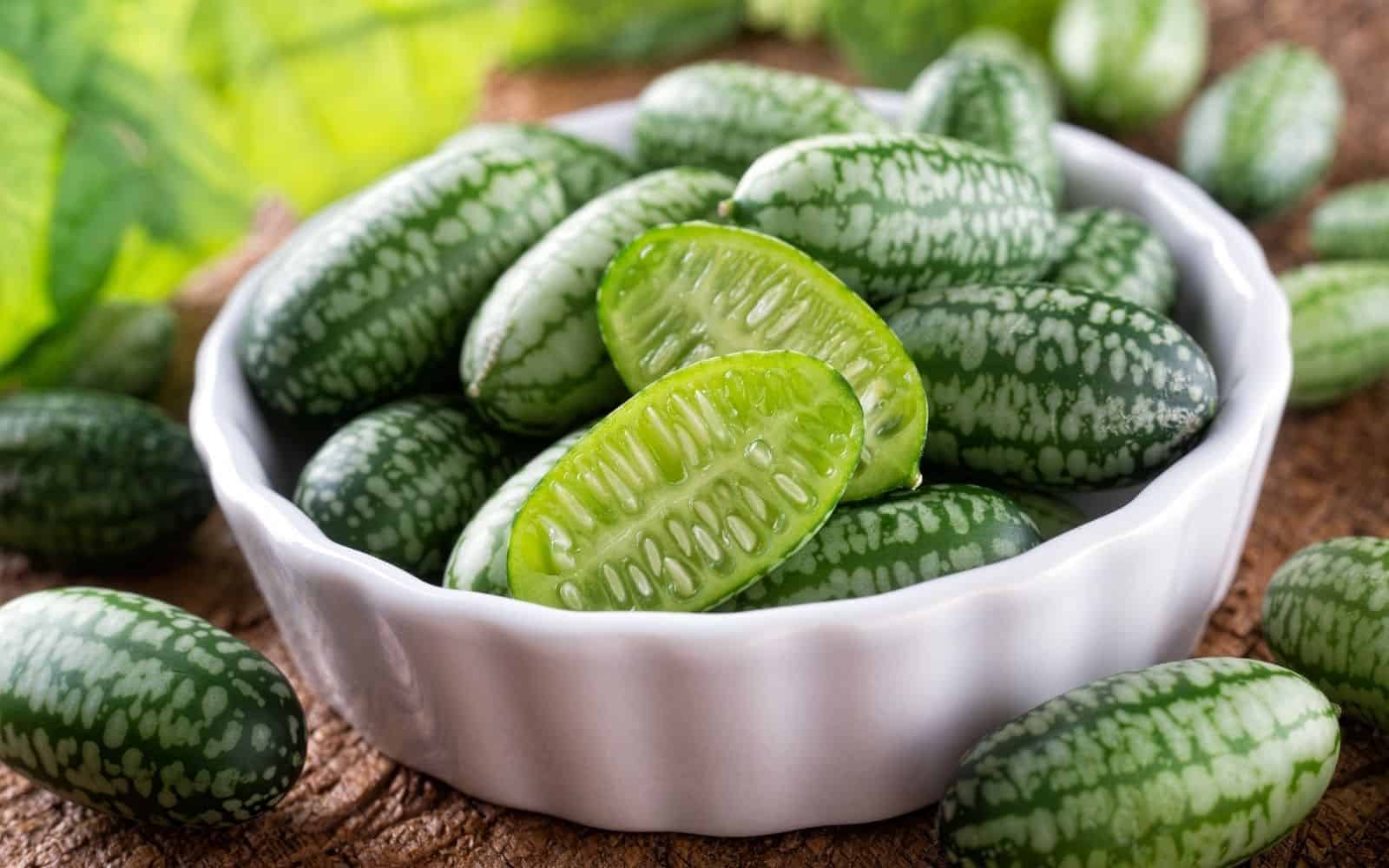
How long does it take for cucamelons to grow?
Cucamelons take 60-70 days to fully grow after the seeds sprout. Cucamelon seeds sprout after 7-14 days after they have been planted if they have the correct conditions. The fastest way to grow them at home is to start with seedling plants from the garden center instead of growing your own from seed.
When Should I Plant Cucamelons?
You should plant cucamelons during the mid to late spring or very early summer. Make sure that you plant the cucamelons a few weeks after the last frost and that the ground will not frost again after you plant the seeds. If it frosts after you plant the seeds, before the roots are strong, then the plant will die.
If you plant the cucamelons during the summer, make sure that the soil is mixed with fertilizer and has plenty of water.
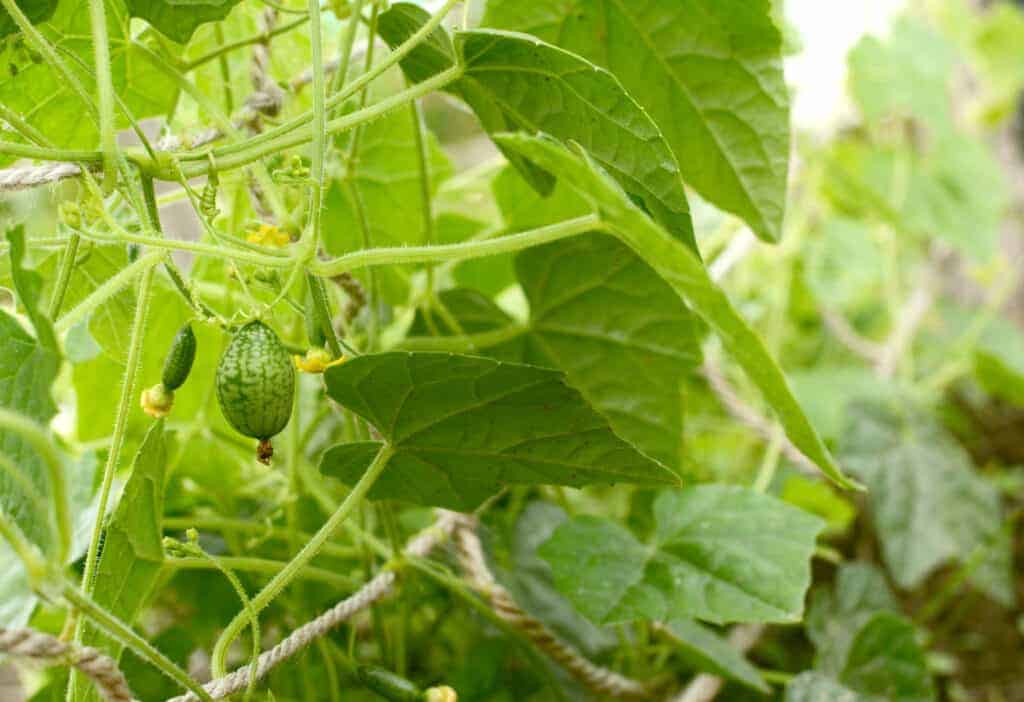
How do I care for a cucamelon plant?
Cucamelons are very easy to care for, which is one of the reasons why many home gardeners enjoy growing them. To care for cucamelons, make sure that they have enough water and sunlight. If you think that the vines have begun to grow to be too tall, trim them down. If it has been a long time since you fertilized the soil that the cucamelons are planted in, add some fertilizer, especially if you think the fruit will appear on the vine soon.
Make sure that pests or fungi are not damaging your cucamelon plant. Although cucamelon is resistant to leaf mold, mildew can occur and pests can harm the plant if they are left alone. If you see mildew on the cucamelon plant, give it more sunlight and avoid watering it until the soil is completely dry.
If you look at your cucamelon plant and notice that there is pest damage, spray an insecticide on the leaves and the base of the plant. Cucamelons do tend to be pest resistant, but that does not mean that no pest will ever bother them. Make sure that the pesticide will not harm bees or butterflies as these insects help the cucamelon plant grow and thrive.
Why Are My Cucamelons Falling Off The Vine?
Your cucamelons may be falling off the vine because the plant does not have enough water to thrive. Test the moisture of the soil and make sure that it is moist, but not wet. Make sure to regularly check the moisture level of the soil, especially if the temperatures in your area have been high in recent days.
Your cucamelons also may be falling off the vine if they are ripe and have been ripe for a long time. Although cucamelons rarely grow to be over 1 inch long, the vine that cucamelons grow on can only handle a certain amount of weight. If the cucamelons are too heavy for the vine to support, then they will fall off. To prevent this, check your cucamelon plant every day and check to see how large the fruits are if fruits are growing already.
Are Cucamelons Invasive?
Cucamelons are not invasive. Although cucamelons are not native to North America, they do not grow quickly enough and do not spread easily enough to be considered an invasive species. Cucamelons grow upwards and do not take over the roots of other plants or take over the space dedicated to other plants unless you allow them to grow out of control. However, it is very easy to control the growth of a cucamelon plant. Simply install a trellis for the plant to grow on.
What is the Most Common Pest for Cucamelon?
The most common pest that harms cucamelon is the aphid. Luckily, aphids are relatively easy to get rid of. Simply spray a pesticide, citrus oil, or insecticidal soap. Other pests can cause damage to cucamelon plants, but they will be taken care of by most pesticides or pest prevention methods.
Are Cucamelons Popular?
Cucamelons are popular fruits with home gardeners. They are growing in popularity in America, but they are nearly impossible to find in grocery stores, so many people are unable to try and eat them. This has hindered the popularity of cucamelons. If you would like to try a cucamelon, contact someone you know and see if they grow them, or start growing a cucamelon plant yourself. You can find the seeds at any local garden store, or you can purchase them from an online store.
Are Cucamelons a Fruit or Vegetable?
Cucamelons are fruits. Cucamelons are too small in size to be considered a vegetable. They are also considered to be fruits botanically because the seeds are found inside the actual food and because the outside of the fruit is slightly harder than the inside (the word “vegetable” is a casual term with no formal botanical meaning).
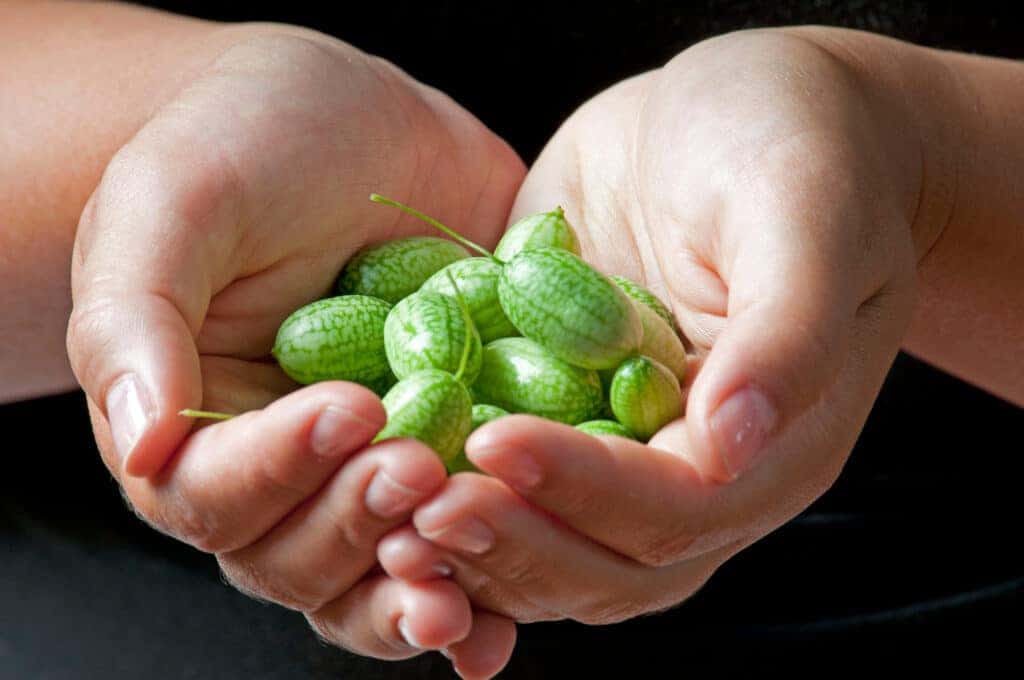
How do I eat cucamelons?
You can eat cucamelons in many ways, including:
- Eat them raw. The peel is edible and gives the fruit a nice crunch.
- Pickle them, or add them to other foods, like sandwiches.
- Use them as a garnish. They look very interesting, although they may be hard to maneuver around if you use them as a garnish on your cocktail. However, they add a bit of sourness that you may want after drinking an alcoholic beverage.
- Add them to salad or salsa. If you add cucamelons to salsa, they will add a slightly sour flavor, which may work well with spicy salsa. Add cucamelons to a salad if you want to add an extra crunch and sour flavor.


